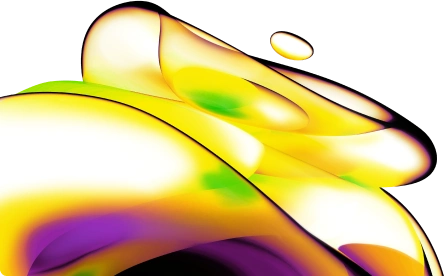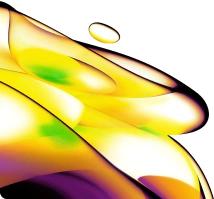

AlphaLISA Human and Mouse CXCL12 Detection Kit, 500 assay points
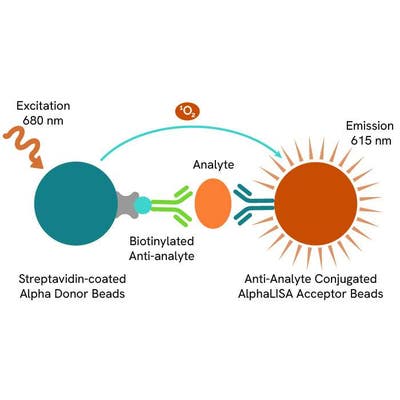
AlphaLISA Human and Mouse CXCL12 Detection Kit, 500 assay points
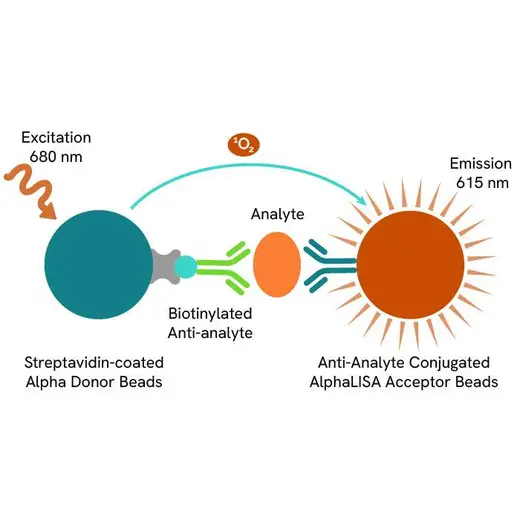

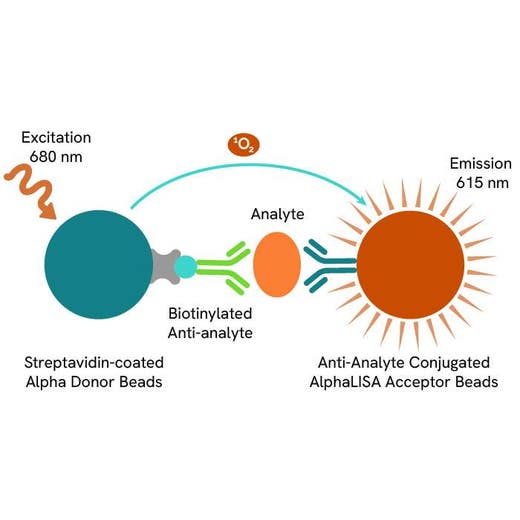

The AlphaLISA™ CXCL12 kit is designed for the simple and rapid quantification of soluble CXCL12 in cell supernatants and plasma samples, providing a fast no-wash alternative to traditional wash-based ELISA assays.
| Feature | Specification |
|---|---|
| Application | Protein Quantification |
| Dynamic Range | 20 - 10,000 pg/mL |
| Limit of Detection | 8.2 pg/mL |
| Limit of Quantification | 20 pg/mL |
| Protocol Time | 1h30 at RT |
| Sample Volume | 5 µL |
The AlphaLISA™ CXCL12 kit is designed for the simple and rapid quantification of soluble CXCL12 in cell supernatants and plasma samples, providing a fast no-wash alternative to traditional wash-based ELISA assays.


AlphaLISA Human and Mouse CXCL12 Detection Kit, 500 assay points


AlphaLISA Human and Mouse CXCL12 Detection Kit, 500 assay points


Product information
Overview
CXCL12 (SDF-1) is a homeostatic chemokine constitutively expressed by bone marrow stromal cells and is present in many other tissues (skin, thymus, lymph nodes, lung, liver). It plays an essential role in homeostatic regulation of leukocyte traffic, hematopoiesis, organogenesis, cell differentiation and tissue regeneration. CXCL12 binds to and activates the CXCR4 receptor. CXCL12 and CXCR4 are overexpressed in various cancer types, and this aberrant expression strongly promotes proliferation, migration and invasion through multiple signal pathways.
Formats
- Our 100 assay point kit allows you to run 100 wells in 96-well format, using a 100 µL reaction volume (10 µL of sample).
- Our 500 assay point kit allows you to run 500 wells in 96-well or 384-well format, using a 50 µL reaction volume (5 µL of sample).
- Our 5,000 assay point kit allows you to run 5,000 wells in 96-well or 384-well format, using a 50 µL reaction volume (5 µL of sample).
Features
- No-wash steps, no separation steps
- ELISA alternative technology
- Broad sample compatibility
- Small sample volume
- Results in less than 2 hours
AlphaLISA technology allows the detection of molecules of interest in a no-wash, highly sensitive, quantitative assay. In an AlphaLISA assay, a biotinylated anti-analyte antibody binds to the Streptavidin-coated Donor beads while another anti-analyte antibody is conjugated to AlphaLISA Acceptor beads. In the presence of the analyte, the beads come into close proximity. The excitation of the Donor beads causes the release of singlet oxygen molecules that triggers a cascade of energy transfer in the Acceptor beads, resulting in a sharp peak of light emission at 615 nm.
Specifications
| Application |
Protein Quantification
|
|---|---|
| Automation Compatible |
Yes
|
| Brand |
AlphaLISA
|
| Detection Modality |
Alpha
|
| Dynamic Range |
20 - 10,000 pg/mL
|
| Limit of Detection |
8.2 pg/mL
|
| Limit of Quantification |
20 pg/mL
|
| Protocol Time |
1h30 at RT
|
| Sample Volume |
5 µL
|
| Shipping Conditions |
Shipped in Blue Ice
|
| Target |
CXCL12
|
| Target Class |
Cytokine
|
| Target Species |
Human
Mouse
|
| Technology |
Alpha
|
| Therapeutic Area |
Immuno-oncology
Inflammation
Oncology
|
| Unit Size |
500 assay points
|
How it works
Principle of the AlphaLISA CXCL12 assay
The AlphaLISA CXCL12 assay is based on an AlphaLISA sandwich immunoassay involving a biotinylated anti-CXCL12 antibody bound to Streptavidin-coated AlphaLISA Donor beads and an anti-CXCL12 antibody conjugated to AlphaLISA Acceptor beads. In the presence of the CXCL12 the beads come into proximity. The excitation of the Donor beads provokes the release of singlet oxygen molecules that triggers a cascade of energy transfer within the Acceptor beads, resulting in emission with λmax at 615 nm. The intensity of the signal is directly proportional to the concentration of CXCL12 present in the sample.

Protocol of the AlphaLISA human and mouse CXCL12 assay
The AlphaLISA CXCL12 assay can be run in a 96- or 384-well detection plate (50 µL final). As described here, samples or standards are dispensed directly into the assay plate for the detection of CXCL12 by AlphaLISA reagents. No washing steps are needed. The protocol can be further miniaturized or upscaled by simply resizing each addition volume proportionally.
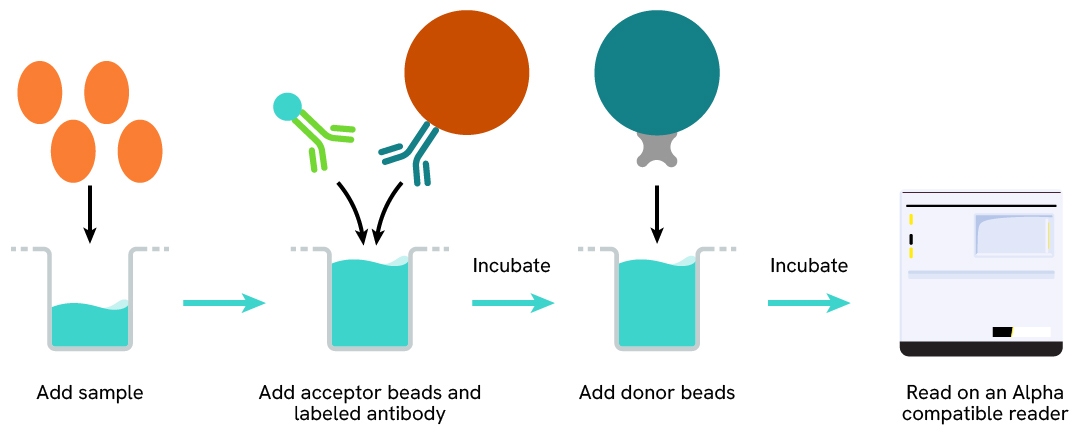
Assay details
Human and mouse CXCL12 assay details
| Kit components | Lyophilized analyte, SA-Donor beads, Biotinylated anti-analyte, Anti-analyte conjugated acceptor beads, assay buffer |
|---|---|
| LDL & LLOQ (in assay buffer) | 8.2 pg/ml & 20 pg/mL |
| LDL & LLOQ (in DMEM) | 24.6 pg/ml & 51 pg/mL |
| LDL & LLOQ (in RPMI) | 76.2 pg/ml & 165 pg/mL |
| LDL & LLOQ (in FBS) | 24.2 pg/ml & 54.8 pg/mL |
| Species | Human, mouse |
| Time to result | 1.5 hours at RT |
Analytical performance
Intra-assay precision table
Each of the 3 samples were measured 24 times, and the % CV was calculated for each sample. Samples were mouse recombinant CXCL12.
| Sample | [CXCL12] (pg/mL) | CV |
|---|---|---|
| 1 | 13,324 | 19% |
| 2 | 1,148 | 6% |
| 3 | 107 | 7% |
| Mean CV | 10.6% |
Inter-assay precision table
Each of the samples were measured in 3 independent experiments (3 days), and the % CV was calculated for each sample. Samples were mouse recombinant CXCL12.
| Sample | [CXCL12] (pg/mL) | CV |
|---|---|---|
| 1 | 10,850 | 18% |
| 2 | 1,008 | 13% |
| 3 | 112 | 4% |
| Mean CV | 11.6% |
Spike and recovery table
Known concentrations of standard (exogenous analyte) were spiked into human plasma samples containing the endogenous analyte. Non-spiked and spiked samples were measured in the assay.
| Sample | [Endogenous CXCL12] in sample (pg/mL) | [Recombinant CXCL12] spiked into sample (pg/mL) | Recovery (%) |
|---|---|---|---|
| Human plasma N°1 | 30,362 | 20,000 | 97 |
| Human plasma N°2 | 1,505 | 20,000 | 106 |
Dilutional linearity table
A sample of mouse recombinant CXC12 was serially diluted. Concentrations of CXCL12 in neat and diluted samples were determined.
| Dilution factor | Expected CXCL12 concentration (pg/mL) | Measured CXCL12 concentration (pg/mL) | % dilution recovery |
|---|---|---|---|
| Neat | 12935 | ||
| 2 | 6468 | 7198 | 111 |
| 4 | 3599 | 3109 | 86 |
| 8 | 1555 | 1442 | 92 |
| 16 | 721 | 729 | 101 |
| 32 | 364 | 362 | 99 |
| 64 | 181 | 170 | 93 |
| 128 | 85 | 82 | 96 |
| 256 | 41 | 38 | 92 |
| Mean | 96.2 | ||
Specificity table
Cross reactivity were assessed using recombinant proteins and tested at 10,000 pg/mL. The assay is human CXCL12 isoform α specific as isoforms β and γ were not detected. The assay is also compatible with mouse CXCL12.
| Tested protein | Cross reactivity |
|---|---|
| Mouse CXCL12 | 100% |
| Human CXCL12 isoform α | 100% |
| Human CXCL12 isoform β | 0% |
| Human CXCL12 isoform γ | 0% |
Assay validation
Validation of AlphaLISA CXCL12 detection kit on human cell supernatants
BJ human fibroblast cells were plated in a 96-well culture plate at 200k and 400k cells/well in MEM medium with 10% FBS for 24H at 37°C. Then, 5 µL of supernatants were transferred into an AlphaPlate-384 to measure the concentration of secreted CXCL12. The standard curve was prepared in MEM medium + 10% FBS. All other assay components were diluted in AlphaLISA BSA Assay Buffer and added into the wells using the kit protocol. AlphaLISA counts were measured and the CXCL12 concentration in each supernatant sample was interpolated from the standard curve.
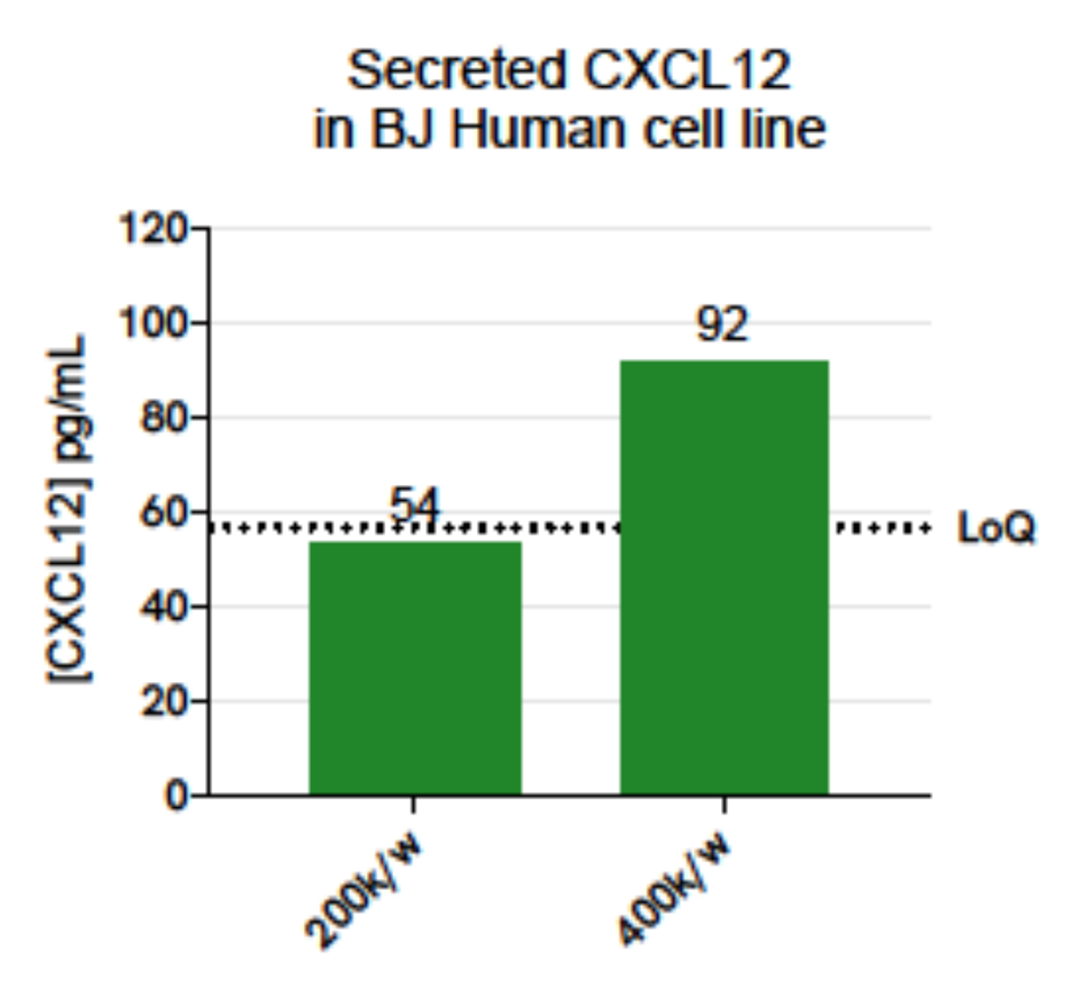
Validation of AlphaLISA CXCL12 detection kit on human cell supernatants
NIH-3T3 mouse fibroblast cells were plated in a 96-well culture plate at 200k and 400k cells/well in DMEM medium with 10% FBS for 24H at 37°C. Then, 5 µL of supernatants were transferred into an AlphaPlate-384 to measure the concentration of secreted CXCL12. The standard curve was prepared in DMEM medium + 10% FBS. All other assay components were diluted in AlphaLISA BSA Assay Buffer and added into the wells using the kit protocol. AlphaLISA counts were measured and the CXCL12 concentration in each supernatant sample was interpolated from the standard curve.
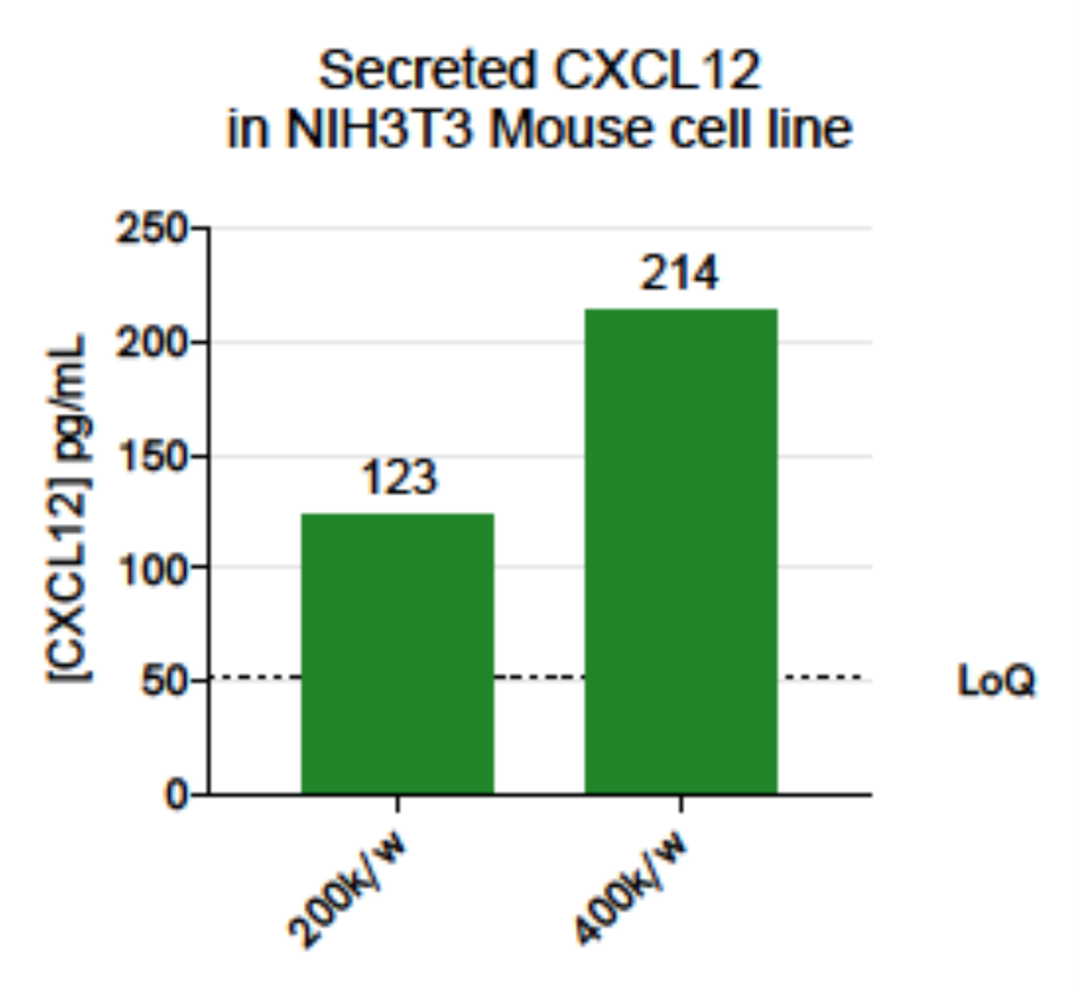
Validation of AlphaLISA CXCL12 detection kit on human plasma
Normal platelet poor plasma samples from healthy volunteers were tested for endogenous level of CXCL12.
5 µL of plasma was transferred into an AlphaPlate-384 to measure the concentration of endogenous CXCL12. The standard curve was prepared in FBS. All other assay components were diluted in AlphaLISA BSA Assay buffer and added into the wells using the kit protocol. AlphaLISA counts were measured and the CXCL12 concentration in each supernatant sample was interpolated from the standard curve.
| Sample | Mean [CXCL12] (pg/mL) | Range (pg/mL) |
|---|---|---|
| Human platelet poor plasma (N=20) | 4828 | 736 - 11497 |
SDS, COAs, Manuals and more
Are you looking for technical documents related to the product? We have categorized them in dedicated sections below. Explore now.
- Language英语CountryUnited States
- Language英语CountryEU
- Resource TypeManualLanguage英语Country-


How can we help you?
We are here to answer your questions.
